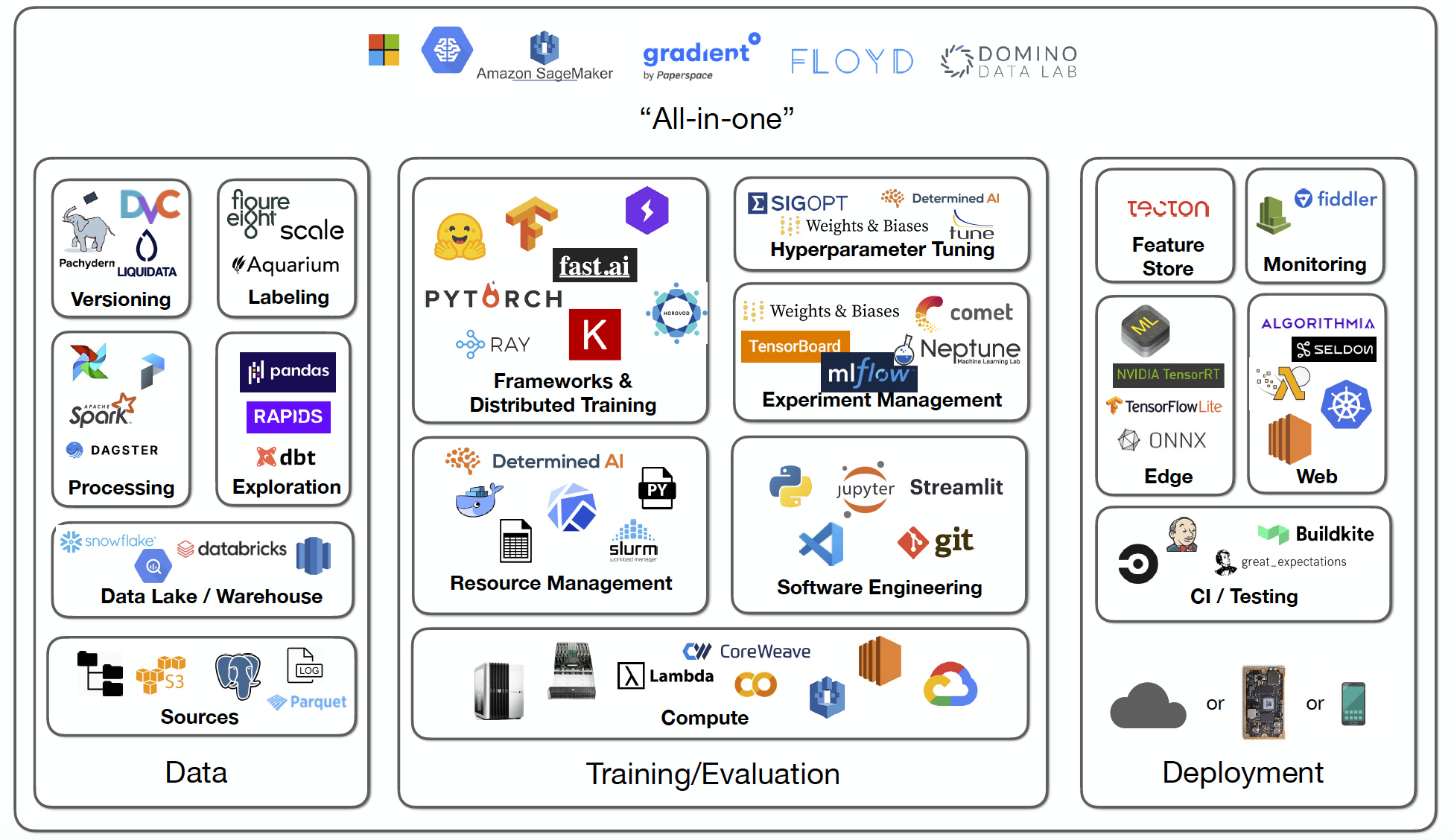Are you sure you want to delete this access key?



| Legend |
|---|
| DVC Managed File |
| Git Managed File |
| Metric |
| Stage File |
| External File |
| Legend |
|---|
| DVC Managed File |
| Git Managed File |
| Metric |
| Stage File |
| External File |
In short for Machine Learning Operations, is a set of practices and methodologies that aim to streamline the deployment, management, and maintenance of machine learning models in production environments. It brings together the principles of DevOps (Development Operations) and applies them specifically to machine learning workflows. The MLOps lifecycle encompasses various stages and processes, ensuring the smooth integration of machine learning models into real-world applications.

Implementing MLOps practices is crucial for several reasons:
Reproducibility: MLOps ensures that the entire machine learning pipeline, from data preprocessing to model deployment, is reproducible. This means that the same results can be obtained consistently, facilitating debugging, testing, and collaboration among team members.
Scalability: MLOps allows for the seamless scaling of machine learning models across different environments and datasets. It enables efficient deployment and management of models, regardless of the volume of data or the complexity of the infrastructure.
Agility: MLOps promotes agility by enabling rapid experimentation, iteration, and deployment of models. It facilitates quick feedback loops, allowing data scientists and engineers to adapt and improve models based on real-world performance and user feedback.
Monitoring and Maintenance: MLOps ensures continuous monitoring of deployed models, tracking their performance and detecting anomalies. It enables proactive maintenance, including retraining models, updating dependencies, and addressing potential issues promptly.
Collaboration: MLOps fosters collaboration among data scientists, engineers, and other stakeholders involved in the machine learning workflow. It establishes standardized practices, tools, and documentation, enabling efficient communication and knowledge sharing.
.gif)
This project aims to implement the MLOps (Machine Learning Operations) lifecycle from scratch. The stages involved in the lifecycle include:
Set up your project environment and version control system for MLOps.
requirements.txt.Perform EDA on your data to gain insights and understand statistical properties.
Create a data ingestion pipeline for data preparation and versioning.
Perform data transformation tasks to ensure data quality and consistency.
Train and tune multiple classification models and track experiments.
Create a Pydantic pipeline for data preprocessing and validation.
Build a FastAPI to make predictions using your trained models.
Conduct thorough testing of your FastAPI application.
Prepare your application for deployment using containers and orchestration.
Set up a Continuous Integration and Continuous Deployment pipeline for your application.
git init
git clone https://github.com/karan842/mlops-best-practices.git
python -m venv env
pip install -r requirements.txt
python app.py
mlflow ui
dvc init
dvc repro
pytest
To make contribution in this project:

Press p or to see the previous file or, n or to see the next file
Are you sure you want to delete this access key?
Are you sure you want to delete this access key?
Are you sure you want to delete this access key?
Are you sure you want to delete this access key?